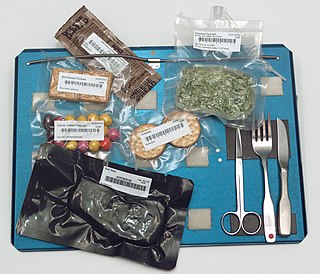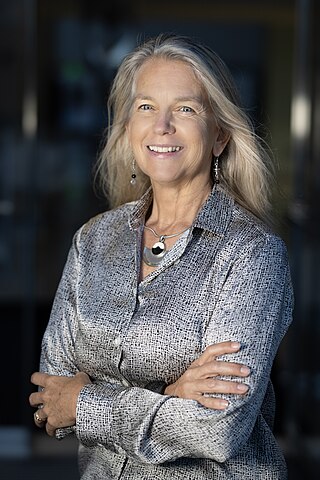
The 2suit (alternately 2-Suit or twosuit) (abbrv.2S) is a garment designed to facilitate sex in weightless environments. It has been tested in microgravity during a parabolic flight. [1]

The 2suit (alternately 2-Suit or twosuit) (abbrv.2S) is a garment designed to facilitate sex in weightless environments. It has been tested in microgravity during a parabolic flight. [1]

The 2Suit was invented by Vanna Bonta in 2006 [2] after she experienced microgravity during a parabolic flight that she flew with the National Space Society in 2004. Bonta presented the garment design in 2006 on a panel at a New Space conference of the Space Frontier Foundation. [1] [3] [4]
In 2008, the first 2Suit was manufactured and tested by a History Channel documentary for the television series The Universe. The episode premiered on December 3, 2008. [5]
The documentary described the 2Suit as "one small step for humankind colonizing the universe." The garment was presented as a utilitarian garment with multiple applications that serves the need for human intimacy and procreation by stabilizing physical proximity in microgravity environments. [5]


The 2suit is a flight suit with a large front flap that can be opened and attached to another 2suit via Velcro strips. [1]
The 2suit is equipped to fasten to a stable surface. The roominess within the garment is adjustable from within. It also is lined with inner harnesses that can adjust the proximity of various points of the wearer's body to the body of another 2suit wearer. A quick-disrobe function removes the garments, optionally leaving the harnesses in place for fixing to a stable surface. [6]
The function of the 2suit is to allow two or more people to remain in proximity effortlessly in weightless or microgravity environments, permitting physical intimacy and facilitating tandem or adjacent tasks. [7]
Cracked.com listed the 2Suit as one of "seven real suits that will soon make the world a cooler place." [8]

The 2Suit has been mentioned in travel and exploration magazines as part of articles on subject like the "400 mile high club." [9] [10] [11] [12]
The 2Suit was discussed as fashion in WIRED and Discovery Magazine , among other media. [13] [14] [15]
The 2Suit has been the subject of songs, including the Valentine's Days album titled 2Suit, by Binary Bits, [16] [17] and in the Anti-Gravity Love EP track Sex Suit by Irish band Fred and Bob [18]

Robert Brent "Bob" Thirsk, is a Canadian retired engineer and physician, and a former Canadian Space Agency astronaut. He holds the Canadian record for the most time spent in space. He became an officer of the Order of Canada (OC) in 2013 and was named to the Order of British Columbia (OBC) in 2012.

A reduced-gravity aircraft is a type of fixed-wing aircraft that provides brief near-weightless environments for training astronauts, conducting research, and making gravity-free movie shots.

Artificial gravity is the creation of an inertial force that mimics the effects of a gravitational force, usually by rotation. Artificial gravity, or rotational gravity, is thus the appearance of a centrifugal force in a rotating frame of reference, as opposed to the force experienced in linear acceleration, which by the equivalence principle is indistinguishable from gravity. In a more general sense, "artificial gravity" may also refer to the effect of linear acceleration, e.g. by means of a rocket engine.
In physics and materials science, a drop tower or drop tube is a structure used to produce a controlled period of weightlessness for an object under study. Air bags, polystyrene pellets, and magnetic or mechanical brakes are sometimes used to arrest the fall of the experimental payload. In other cases, high-speed impact with a substrate at the bottom of the tower is an intentional part of the experimental protocol.

The effects of spaceflight on the human body are complex and largely harmful over both short and long term. Significant adverse effects of long-term weightlessness include muscle atrophy and deterioration of the skeleton. Other significant effects include a slowing of cardiovascular system functions, decreased production of red blood cells, balance disorders, eyesight disorders and changes in the immune system. Additional symptoms include fluid redistribution, loss of body mass, nasal congestion, sleep disturbance, and excess flatulence. Overall, NASA refers to the various deleterious effects of spaceflight on the human body by the acronym RIDGE.

Space food is a type of food product created and processed for consumption by astronauts during missions to outer space. Such food has specific requirements to provide a balanced diet and adequate nutrition for individuals working in space while being easy and safe to store, prepare and consume in the machinery-filled weightless environments of crewed spacecraft. Space food is commonly freeze-dried to minimize weight and ensure long shelf life.
The conditions governing sex in space have become a necessary study due to plans for long-duration space missions, as well as the future potential accommodation of sexual partners aboard the International Space Station (ISS). Issues explored include disrupted circadian rhythms, radiation, isolation, stress, and the physical acts of intercourse in zero or minimal gravity.

Dava J. Newman is an American aerospace engineer. She is the director of the MIT Media Lab and a former deputy administrator of NASA. Newman is the Apollo Program Professor of Aeronautics and Astronautics and Engineering Systems at the Massachusetts Institute of Technology. She has been a faculty member in the department of Aeronautics and Astronautics and MIT's School of Engineering since 1993.

A primarylife support system (PLSS), is a device connected to an astronaut or cosmonaut's spacesuit, which allows extra-vehicular activity with maximum freedom, independent of a spacecraft's life support system. A PLSS is generally worn like a backpack. The functions performed by the PLSS include:
Binary Star is a hip-hop project by rapper One Be Lo, and was formerly a duo with rapper Senim Silla. The pair met and formed the group in 1998 during their time in Hiawatha Correctional Facility.

Weightlessness is the complete or near-complete absence of the sensation of weight, i.e., zero apparent weight. It is also termed zero g-force, or zero-g or, incorrectly, zero gravity.

The International Space Station is a platform for scientific research that requires one or more of the unusual conditions present in low Earth orbit. The primary fields of research include human research, space medicine, life sciences, physical sciences, astronomy and meteorology. The 2005 NASA Authorization Act designated the American segment of the International Space Station as a national laboratory with the goal of increasing the use of the ISS by other federal agencies and the private sector.
ELIPS - European Programme for Life and Physical Sciences in Space and applications utilising the International Space Station started in 2001 and was intended to cover the activities for the following 5 years. This Microgravity Programme at the European Space Agency (ESA) is an optional programme, with currently 17 ESA member states participating. The ELIPS programme prepares and performs research on the International Space Station, and other uncrewed mission platforms like Sounding Rockets, in fundamental and applied life and physical sciences. ELIPS is the continuation of the earlier European microgravity programmes EMIR 1&2, and the Microgravity Facilities for Columbus, MFC.

Neutral buoyancy simulation with astronauts immersed in a neutral buoyancy pool, in pressure suits, can help to prepare astronauts for the difficult task of working while outside a spacecraft in an apparently weightless environment.

Vladimir Pletser is Director of Space Training Operations at Blue Abyss since 2018, where he is in charge of developing astronaut training programs. From 2016 to early 2018, he was a Visiting Professor and Scientific Adviser at the Technology and Engineering Centre for Space Utilization (CSU) of the Chinese Academy of Sciences in Beijing, China. He supported the preparation of scientific experiments in microgravity for the Chinese Tiangong space station and for aircraft parabolic flights. He worked previously from 1985 till early 2016 as a senior Physicist Engineer at the European Space Research and Technology Centre (ESTEC) of ESA.
Quantum fiction is a genre of speculative fiction that reflects modern experience of the material world and reality as influenced by quantum theory and new principles in quantum physics. It is characterized by the use of an element in quantum mechanics as a storytelling device. The genre is not necessarily science-themed, and blurs the line separating science fiction and fantasy into a broad scope of mainstream literature that transcends the mechanical model of science and involves the fantasy of human perception or imagination as realistic components affecting the everyday physical world.

Vanna Marie Bonta was an American writer, actress, and inventor. She was of partial Italian descent. She wrote Flight: A Quantum Fiction Novel. As an actress, Bonta played "Zed's Queen" in The Beastmaster. She performed primarily as a voice talent on a roster of feature films, such as Disney's Beauty and the Beast, as well as on television. Bonta invented the 2suit, a flight garment designed to facilitate sex in microgravity environments of outerspace. The spacesuit was featured on The Universe television series, which followed Bonta into zero gravity to film an episode titled Sex in Space that aired in 2009 on the History Channel.

Hervé Stevenin is a European aquanaut leading ESA Neutral Buoyancy Facility Operations and the EVA Training Unit at the European Astronaut Centre (EAC) in Cologne, Germany. He served as an aquanaut on the NASA Extreme Environment Mission Operations 19 crew.

Locomotion in space includes all actions or methods used to move one's body in microgravity conditions through the outer space environment. Locomotion in these conditions is different from locomotion in a gravitational field. There are many factors that contribute to these differences, and they are crucial when researching long-term survival of humans in space.

Space sexology has been defined as the "comprehensive scientific study of extraterrestrial intimacy and sexuality". It aims to holistically understand intimacy and sexuality in space, including its risks, and potential benefits for the health and well-being of those who travel beyond our home planet.